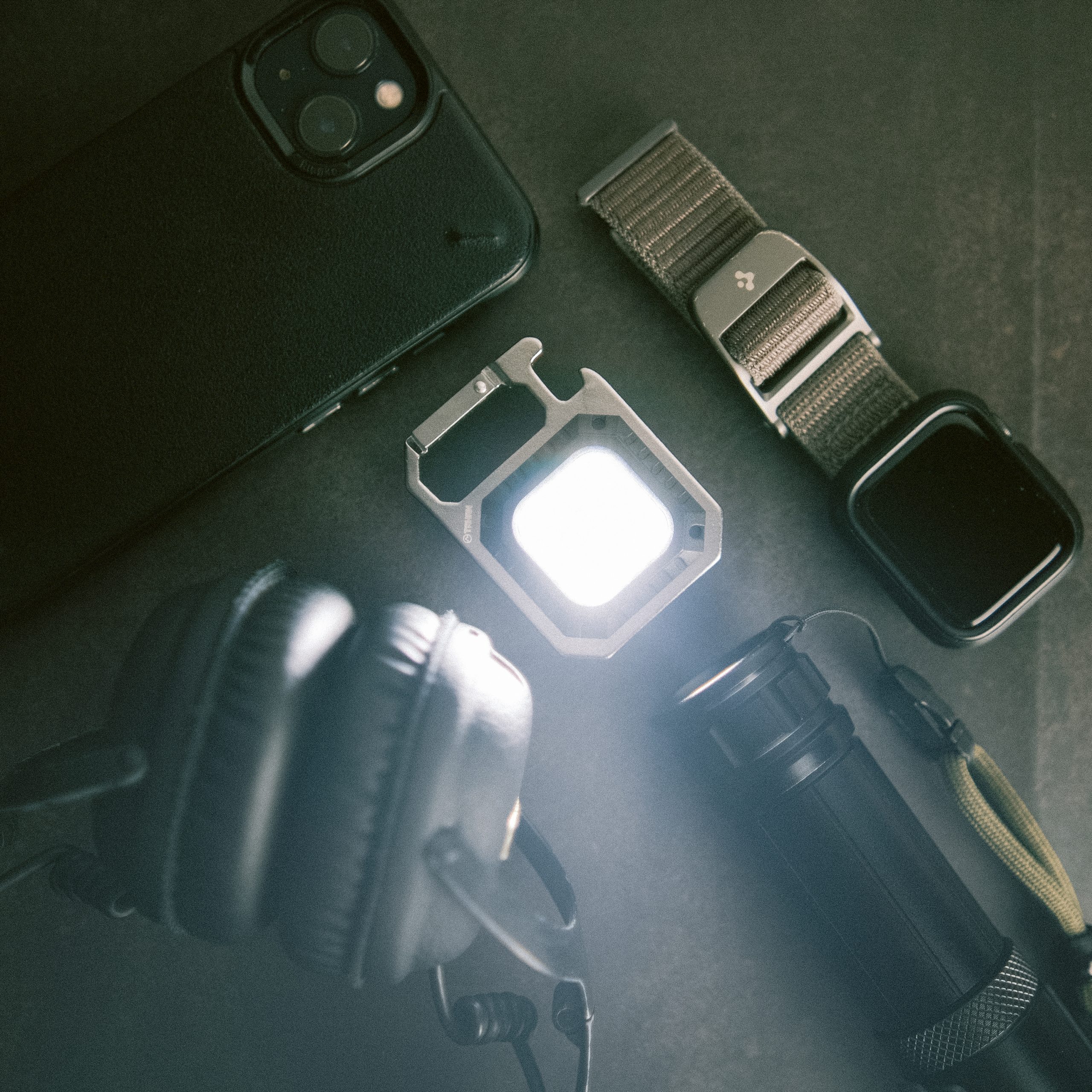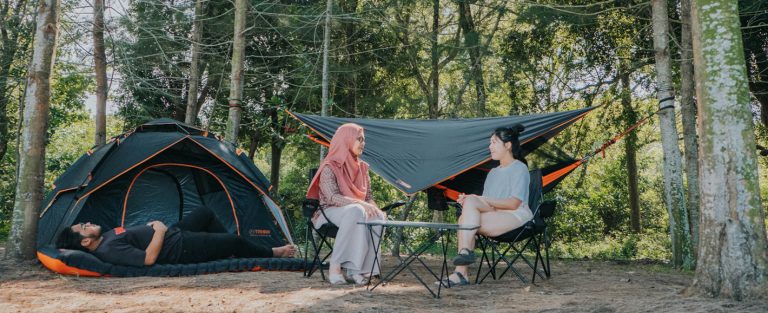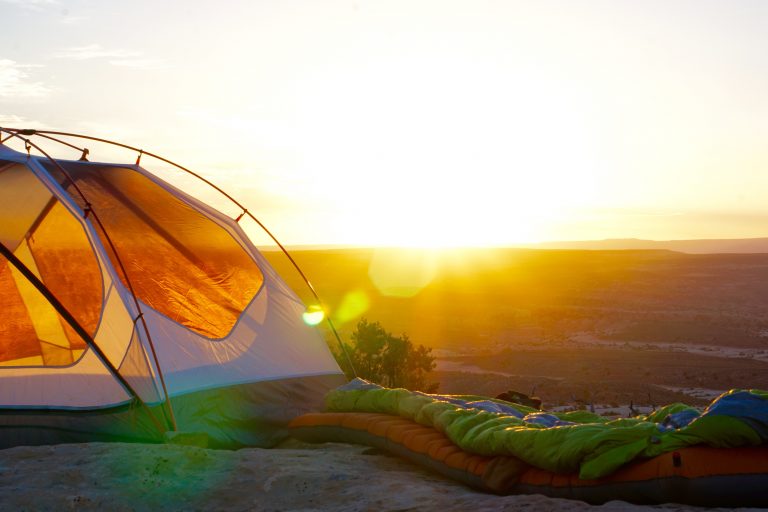Choosing the Right Camping Lighting: An Essential Guide
Choosing the Right Camping Lighting: An Essential Guide
Proper lighting is a crucial element of any outdoor camping trip. Whether car camping at an established site or embarking on a backcountry backpacking expedition, having versatile and reliable illumination allows campers to cook, navigate terrain, socialize, read, and perform other activities after dusk. Historically, campers relied on open fires or gas lanterns for light. However, improvements in LED, battery, and charging technologies have led to an explosion of modern lighting options catered to camping.
[gap]
[row label=”#1″ visibility=”hidden”]
[col span__sm=”12″]
#1 Choosing the Right Camping Light: The Complete Guide
When selecting lighting for an outdoor camping adventure, the ideal setup depends greatly on the type of trip being taken and activities planned. Backpackers traversing deep wilderness have vastly different requirements than a family camping at a drive-up site with electrical hookups. However, certain key factors should be weighed regardless of the specific context.
Determining Your Lighting Needs
- Assess the size of area needing illumination (individual bunks vs. large campgrounds)
- Evaluate required brightness based on tasks (low for tent ceilings or high for cooking areas)
- Consider weight restrictions and durability requirements
- Determine necessary battery runtime – longer for multi-day trips without power access
- Factor conditions like weather, altitude, temperatures
Carefully evaluating intended uses and conditions helps narrow viable lighting options. Those embarking on technical mountaineering expeditions need specialized equipment compared to groups casually car camping in summer. Realistically determining needs prevents packing excess bulk or underpreparing.
[/col]
[/row]
[row label=”#2″]
[col span__sm=”12″]
#1 Key Features to Look For
When researching options, certain lighting features indicate how well a model can fulfill various camping roles:
Durability and Waterproofing
- Impact resistance: Ability to withstand bumps, drops, jostling during transport
- Waterproof rating: Measured in IPX scale (e.g. IPX4 = splash resistant, IPX7 = 1m submersion for 30 mins)
- Dust/dirt ingress rating: Important for sandy or muddy conditions
Models able to survive frequent packing, transport, and outdoor exposure better maintain functionality through multi-day trips.
Light Modes and Adjustability
- Brightness levels: Low, medium, high settings to conserve battery as needed
- Beam types: Flood lights illuminate broad areas, spotlights focus intense light
- Special modes: Red or green preserves night vision, strobe signals emergencies
Ability to angle light beams, toggle between flood and spotlight, or dim brightness prevents glare while allowing customization for given situations.
[row_inner]
[col_inner span=”4″ span__sm=”12″]
[ux_image id=”614577″ image_size=”original” link=”https://www.pttoutdoor.com/shop/esen97-led-motion-sensing-headlamp/” target=”_blank”]
ESEN97 LED Motion Sensing Headlamp
[/col_inner]
[col_inner span=”4″ span__sm=”12″]
[ux_image id=”614289″ image_size=”original” link=”https://www.pttoutdoor.com/shop/tahan-luminate-metal-mini-lantern/” target=”_blank”]
TAHAN Luminate Metal Mini Lantern is durable and water-splash resistant.
[/col_inner]
[col_inner span=”4″ span__sm=”12″]
[ux_image id=”613726″ image_size=”original” link=”https://www.pttoutdoor.com/shop/tahan-supernova-torchlight-v2/” target=”_blank”]
TAHAN Supernova Torchlight V2 rated IPX4 water-resistant.
[/col_inner]
[/row_inner]
[/col]
[/row]
[row label=”#3″]
[col span__sm=”12″]
#2 Types of Camping Lights
With an understanding of general lighting requirements and desirable features established, we can now examine characteristics of specific lamp styles used in outdoor recreation:
Headlamps
Headlamps allow for hands-free task illumination. Key features include:
- Adjustable band to secure firmly and direct beam
- Proximity lighting for close up work like cooking, gear repairs
- Tiltable housing to aim without moving head position
- Red or green settings to preserve night vision
Top rated models feature powerful spot beams reaching up to 100 meters plus wide flood beams for peripheral vision. Waterproof units can be submerged for stream crossings.
Lanterns
Lanterns cast 360 degrees of ambient light around a campsite. Variants include:
- Gas lanterns: Fueled by propane or liquid to emit bright light; bulkier and prone to fire risk
- Electric lanterns: Range from compact battery-powered to modular systems with detachable LED panels
- String lights: Softer decorative lighting; connect several strands for wide coverage
Stationary or hanging portable models help avoid casting shadows while occupying shelters. Certain electric versions allow charging of phones or other USB gadgets.
[row_inner]
[col_inner span=”6″ span__sm=”12″]
[ux_image id=”612008″ image_size=”original” link=”https://www.pttoutdoor.com/shop/esen97-led-motion-sensing-headlamp/” target=”_blank”]
ESEN97 LED Motion Sensing Headlamp
[/col_inner]
[col_inner span=”6″ span__sm=”12″]
[ux_image id=”614296″ image_size=”original” link=”https://www.pttoutdoor.com/shop/tahan-luminate-metal-mini-lantern/” target=”_blank”]
TAHAN Luminate Metal Mini Lantern
[/col_inner]
[/row_inner]
[/col]
[/row]
[row label=”#4″]
[col span__sm=”12″]
#3 Choosing the Right Bulb
When examining lighting options, an important consideration is the technology powering the bulb or LED. Common types include:
Incandescent Bulbs
- One of the oldest electric light sources
- Work by heating a filament wire to emit light
- Very inexpensive to produce
- However, extremely inefficient – 90% of energy turned into heat rather than light
Fluorescent Bulbs
- Contain inert gas that produces ultraviolet light, reflected off coating to emit visible light
- More efficient than incandescent
- However, contains mercury raising environmental concerns
LEDs (Light Emitting Diodes)
- Semiconductors that emit light when voltage applied
- No heated filament or glass encasing
- Extremely energy efficient and long-lasting
- Durable with superior shock/vibration resistance
- Color temperature can be tuned
The emergence of affordable, durable LEDs has revolutionized camping lighting, allowing powerful output from compact battery-powered units. Select lights optimized forBrightness, efficiency, and adjustable output.
[/col]
[/row]
[row label=”#5″]
[col span__sm=”12″]
#4 Recommendations for Best Camping Lights
With an overview of key features and technologies, here are some top rated camping lights to consider:
Best for Brightness: Coleman Dual Beam Torch
- 300 lumen max settings
- Distance beam reaches up to 107 meters
- Durable and weatherproof -Runs for 29 hrs on high, 59 hrs on low
Best Lantern for Tents: Vango 250 Beam Lantern
- 250 lumen output lit tent interior
- Flood beam pattern prevents harsh glar
- Hook for hanging and plastic handle
- Water resistant IPX4 rating
Best Headlamp for Kids: Black Diamond Wiz Kid Headlight
- 70 max lumens with distance/proximity modes
- Integrated red night vision mode
- Reflective external housing
- Max battery life: 175 hours (High)
These suggestions showcase quality portable lighting purpose-built for common camping applications, though many factors influence ideal personal selections. When possible, test products in person before embarking on trips. You can also consider our camping lighting as below!
[row_inner]
[col_inner span=”4″ span__sm=”12″]
[ux_image id=”614579″ image_size=”original” link=”https://www.pttoutdoor.com/shop/esen97-led-motion-sensing-headlamp/” target=”_blank”]
ESEN97 LED Motion Sensing Headlamp has 150lm.
[/col_inner]
[col_inner span=”4″ span__sm=”12″]
[ux_image id=”620909″ image_size=”original” link=”https://www.pttoutdoor.com/shop/tahan-luminate-metal-mini-lantern/” target=”_blank”]
TAHAN Luminate Metal Mini Lantern has 360-670lm.
[/col_inner]
[col_inner span=”4″ span__sm=”12″]
[ux_image id=”613734″ image_size=”original” link=”https://www.pttoutdoor.com/shop/tahan-supernova-torchlight-v2/” target=”_blank”]
TAHAN Supernova Torchlight V2 has 1000-1300lm.
[/col_inner]
[/row_inner]
[/col]
[/row]
[row label=”#6″]
[col span__sm=”12″]
#5 The Advantages of Lanterns
Lanterns provide omnidirectional illumination suitable for ambient lighting tasks around campsites. Key benefits include:
Hands-Free Operation
- Frees up hands for cooking, setting up shelters, and other camp duties
- Convenient for moving gear, holding maps, or accompanying children
360 Degree Flood Lighting
- Brightens entire areas from all angles without shadows
- Prevent trips, spills, or losing small items
Types to Meet Diverse Needs
- Compact battery-powered models for backpacking
- Large gas-powered fixtures for established base camps
- Decorative string lights for festive ambiance
- Models with handles, hooks, stands, or magnets to position securely
With powerful wide area lighting and flexibility to mount in diverse ways, lanterns are a versatile addition on any outdoor recreational trip.
[/col]
[/row]
[row label=”#7″]
[col span__sm=”12″]
#6 Gas-Powered Lanterns
Gas lanterns utilize combustible fuels including propane or liquid gases like naptha, unleaded gasoline, or kerosene to produce extremely bright illumination. Models tailored to camping feature:
Fuel Type Variations
- Small propane canisters offer portable convenience
- Liquid fuels provide longer run times from reservoirs
- Some support multiple fuel types
Powerful Output
- Generate up to 1000+ lumens – brighter than most battery-powered options
- Illuminate entire campgrounds or sites
Heavier and Less Portable
- Sturdy materials and fuel chamber adds bulk and weight
- Better suited to car camping with easy access to vehicles
Fire Precautions Essential
- Open flames pose risks which require caution around children and proper ventilation
- Fuel spills, defective parts, or tip-overs can also ignite unintended blazes
While exceptionally bright, the fire hazards and transport inconvenience limit gas model utility for remote wilderness trips. Better suited to established drive-up sites with emergency response access.
[/col]
[/row]
[row label=”#8″]
[col span__sm=”12″]
#7 Electric Lanterns
Electric lanterns utilize LEDs, fluorescent, or incandescent bulbs powered by onboard batteries or separate solar panels. Key attributes include:
Battery Power Options
- Alkaline – inexpensive but performance suffers in cold
- Lithium ion – high performance but requires charging
- Integrated solar – renewable but dependent on adequate sunlight
Lighter Weight
- Most compact battery-powered models under 1 lb
- Enables portability for backcountry trips
Lower Max Output
- Typically less than 500 lumens for integrated units
- Supplemental battery packs can boost output
Safety and Environmental Advantages
- No open flames or fuel hazards
- Less direct pollution than gasoline variants
With safer operation and lighter carry weight, electric lamps better serve remote backpacking groups where transporting fuel cannisters may be impractical.
[row_inner]
[col_inner span=”4″ span__sm=”12″]
[ux_image id=”614578″ image_size=”original” link=”https://www.pttoutdoor.com/shop/esen97-led-motion-sensing-headlamp/” target=”_blank”]
ESEN97 LED Motion Sensing Headlamp has built in rechargeable lithium battery 1200mAh.
[/col_inner]
[col_inner span=”4″ span__sm=”12″]
[ux_image id=”614301″ image_size=”original” link=”https://www.pttoutdoor.com/shop/tahan-luminate-metal-mini-lantern/” target=”_blank”]
TAHAN Luminate Metal Mini Lantern has 500mah battery capacity.
[/col_inner]
[col_inner span=”4″ span__sm=”12″]
[ux_image id=”613741″ image_size=”original” link=”https://www.pttoutdoor.com/shop/tahan-supernova-torchlight-v2/” target=”_blank”]
TAHAN Supernova Torchlight V2 powered by a 5000mAh battery.
[/col_inner]
[/row_inner]
[/col]
[/row]
[row label=”#9″]
[col span__sm=”12″]
#8 Shopping Tips
When evaluating options, here are some key factors to weigh when choosing a lantern for camping:
Lumens
- Unit of measure for amount of light emitted
- Choose higher lumens to illuminate larger areas more brightly
Size and Weight
- Important if carrying on backpacking trips
- Higher output models tend to be bulkier and heavier
Power Source
- Battery types dictate run times, weight, and performance
- Gas models need fuel whereas solar requires adequate sunlight
Water Resistance Rating
- As measured on IPX scale (e.g. IPX4, IPX7)
- Indicates ability to withstand rain, splashes, or accidental submersion
Additional Useful Features:
- Dimmable or variable output settings
- Integrated phone charging ports
- Emergency signals like flashing red SOS mode
- Modular systems to link multiple lights
Considering these attributes helps select optimal lanterns tailored for your specific trip requirements and conditions. Test in store when possible.
[row_inner]
[col_inner span=”4″ span__sm=”12″]
[ux_image id=”612008″ image_size=”original” link=”https://www.pttoutdoor.com/shop/esen97-led-motion-sensing-headlamp/” target=”_blank”]
ESEN97 LED Motion Sensing Headlamp weighs only approx. 100g.
[/col_inner]
[col_inner span=”4″ span__sm=”12″]
[ux_image id=”614294″ image_size=”original” link=”https://www.pttoutdoor.com/shop/tahan-luminate-metal-mini-lantern/” target=”_blank”]
TAHAN Luminate Metal Mini Lantern weighs only approx. 200g.
[/col_inner]
[col_inner span=”4″ span__sm=”12″]
[ux_image id=”613737″ image_size=”original” link=”https://www.pttoutdoor.com/shop/tahan-supernova-torchlight-v2/” target=”_blank”]
TAHAN Supernova Torchlight V2 weighs only approx. 200g.
[/col_inner]
[/row_inner]
[/col]
[/row]
[row label=”#10″]
[col span__sm=”12″]
#9 Power and Runtime Considerations
When selecting any battery-powered devices for outdoor excursions, paying close attention to power system specifications can prevent unpleasant surprises:
Battery/Cell Types
- Alkaline – Inexpensive but drain faster in cold weather
- Lithium Ion – Holds charge well across temperatures but requires separate charger
- Integrated Rechargeable – Convenient charging but may have lower capacities
Expected Runtimes
- Check manufacturer ratings for battery life on various settings
- Higher output levels drain faster
- Cold temperatures diminish performance
Backup Charging Options
- Bring spare batteries or external backup battery packs
- Some locations have solar charging stations
- When possible, charge devices whenever access to power grids exist
Carefully evaluating power capabilities based on your specific trip circumstances helps guarantee adequate, reliable illumination when it matters most in the wilderness!
[/col]
[/row]
[row label=”#11″]
[col span__sm=”12″]
#10 Additional Camping Lighting Tips
To conclude, here are some additional useful lighting best practices when adventuring in the outdoors:
Use A Mix of Light Styles
- Headlamps for hands-free task lighting
- Lanterns for ambient area brightness
- Flashlights for long range spot illumination
Pack Spare Batteries
- Bring more than you estimate needing as backup
- Store separately to isolate failures
Utilize Emergency Features
- Flashing red SOS signaling modes
- External glow-in-dark housing helps locate
Practice Light Discipline
- Turn off when not needed
- Use lowest brightness viable for tasks to conserve battery
Waterproof Storage
- Ensure rubber gaskets seal battery compartments
- If wet, dry thoroughly before storing to prevent corrosion
Following these best practices helps guarantee the illumination you require to cook hot meals, navigate terrain, set up camp, and enjoy nights under the stars!
[/col]
[/row]
Summary
Enhance your camping experience with proper illumination. Choose versatile LED lamps for hands-free personal lighting and lanterns for ambient brilliance at campsites. Consider factors like lumens, battery runtimes, and durability for your specific needs. With quality camping lighting, turn even the darkest settings into inviting arenas for day and night exploration.
[section label=”faqs”]
[accordion title=”FAQs about Camping Lighting”]
[accordion-item title=”What is the best type of camping light for backpacking?”]
For backpacking, headlamps and small flashlights work well since they are lightweight, packable, and allow hands-free use. Headlamps with red light modes are ideal to preserve night vision.
[/accordion-item]
[accordion-item title=”How many lumens do I need for a camping lantern?”]
Look for lanterns with 200-300+ lumens to brightly light up a decent sized tent or picnic area at a campsite. 500+ lumens can illuminate an entire campground.
[/accordion-item]
[accordion-item title=”What batteries last the longest in camping lights?”]
Lithium batteries last the longest, maintaining performance even in cold weather. Rechargeable batteries are also good provided you have a way to charge them on long trips.
[/accordion-item]
[accordion-item title=”Should I buy gas or battery powered camping lanterns?”]
Battery powered lanterns are safer and more portable for backpacking. But for car camping with reliable fuel access, propane or gas lanterns provide extremely bright light.
[/accordion-item]
[accordion-item title=”How do I prevent my camping lights from getting ruined by water or dirt?”]
Look for lights with strong IPX4, IPX6, or IPX7 waterproof ratings so they can resist splashes or even immersion. Ensure battery compartments and seals are clear of debris and moisture each day.
[/accordion-item]
[/accordion]
[/section]
Thank you for taking the time to explore our article! If you’re hungry for more camping tips and outdoor adventures, check out our next insightful piece on essential gear for a memorable experience here. Happy reading!







